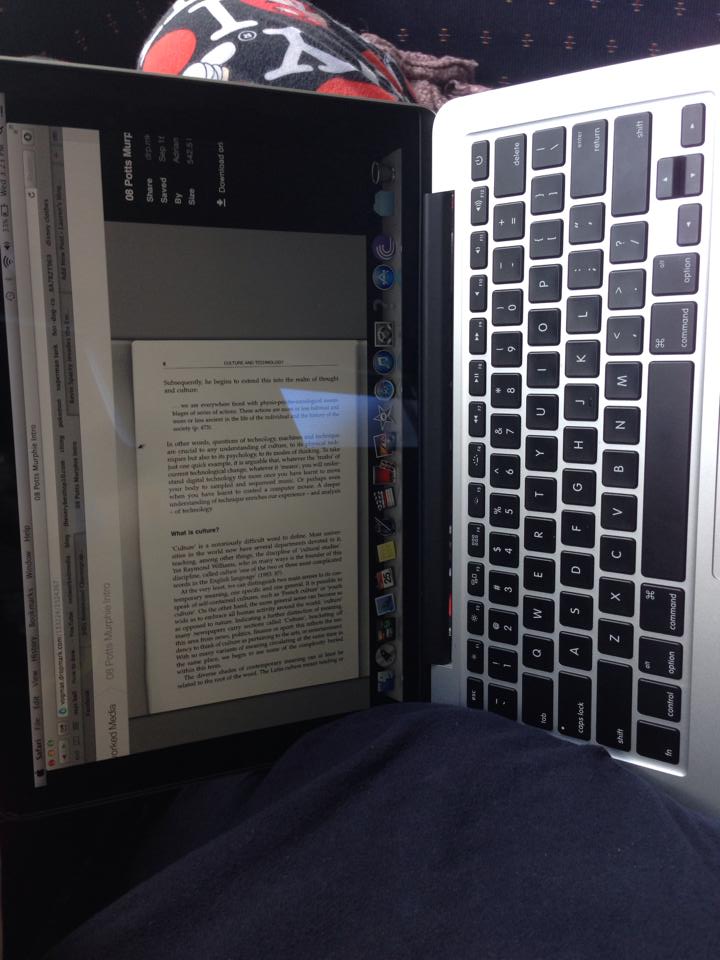this weeks reading, which can be found here, is an interesting one but seems pretty fitting for our final reading as it is look towards the future of technologies and machinery and science in general really. all the work of smart people and how it can affect and assist the not so smart people. but, that first dream, “the dream of symbiosis”, is pretty much the cause of the worlds destruction every sci-fi movie to do with machines or robots or technology. and so i couldn’t really get past that. have you ever

found a book or movie about machines that can think for themselves, on the level of humans, that didn’t result in some world altering disaster? no.. because it just couldn’t happen. maybe i’m being small minded here. i don’t know i’ve probably just seen too many robot movie. but it happen, they all turn evil. and with their super robot strength, we humans don’t stand a chance. i believe that the more advanced we make our technology, the closer we are bringing ourselves to our own destruction. but, thats just me. maybe i’m overreacting a bit. lets see what those other dreams were…
so, apart from the dream of having the world taken over by robots, we have the dream of emergence. this again links back into my robots theory where with such advanced technology, intelligence must inevitably emerge. (and destroy us all. ok, maybe i’m getting a bit carried away). then there was the dream of emergence, which i only understood because it said something about virtual reality systems. which would be cool. you know, kinda like in the matrix, where the robots control us all by keeping us in a virtual reality of the world while they pretty much eat us.
next came the dream of world peace. and now you’re thinking “how is she gonna turn this one into a doomsday situation?”. well, i can’t. world peace would be great but, i don’t think it’s technology that’s going to get us there.
the dream of transparency didn’t give much definition. i guess it’s kinda just like what adrian discussed in the lecture about everything being out there. once its online, its there for anyone to read so the dream is that eventually everything will be shared equally with everyone.

on the other hand, i have no idea what the dream of flows was about, especially because i kept thinking it said dream of flowers, which i think is much nicer and less likely to lead to our destruction by robots.
next is the dream of the open work. this one also seemed kinda confusing but i understood as similar to another one of adrian’s point from earlier this semester. this was about “content is not king” but rather its the services that provide content or allow users to create their own. the reading says that one of the “Strongest shifts of emphasis in the digital age is movement from creating finished works of art to creating systems of productions of art”. this makes sense because in society today, consumers are now creators too and so a more successful technology would be one that allows for more to be created rather than one that simply is.
no idea what the dream of the other was about and i’m guessing that the dream of new art is pretty much just that, the belief that the future of technology will create more advanced technology and the hopes that that new art won’t one day rise up against us.
the final dream was “hacking the dream” which i can only imagine involves hacking into the internet and changing it to suit your needs or what you want to create, but that one was also a bit confusing. from all of this, i have learnt that i am pretty sure that machines will one day defeat the human race but hopefully i will not be around to see it. before that time happens however, we have a lot of awesome new technologies to look forward to 





